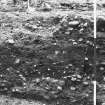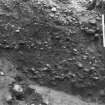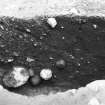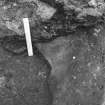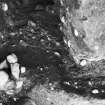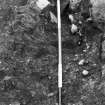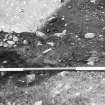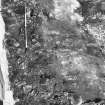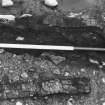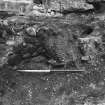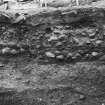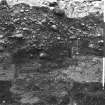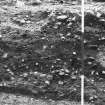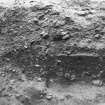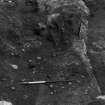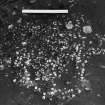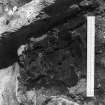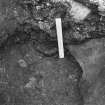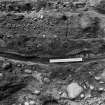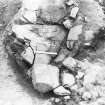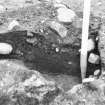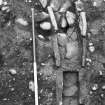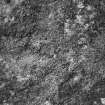Inverness, 13 - 21 Castle Street
Settlement (Medieval), Unidentified Flint(S) (Flint)(Period Unassigned)
Site Name Inverness, 13 - 21 Castle Street
Classification Settlement (Medieval), Unidentified Flint(S) (Flint)(Period Unassigned)
Canmore ID 13315
Site Number NH64NE 104
NGR NH 6673 4518
Datum OSGB36 - NGR
Permalink http://canmore.org.uk/site/13315
First 100 images shown. See the Collections panel (below) for a link to all digital images.
- Council Highland
- Parish Inverness And Bona
- Former Region Highland
- Former District Inverness
- Former County Inverness-shire
NH64NE 104 6673 4518.
(see also NH64NE 112.01
NH6645 Following the publication of the Scottish Burgh Survey report on Inverness, 7 trial trenches were excavated at strategic points within the medieval burgh:-
Trench 1, on the cleared site of No's 19 and 21 Castle Street.
Trench 2, in the garden of balnain House, on the north bank of the River Ness.
Trench 3, behind No's 43-47 Church Street.
trench 4, in the drying green immediately behind Dunbar's Hospital, Church Street.
Trench 5, behind the municipal swimming baths.
Trench 6, to the south of Abertarff House, Church Street.
Trench 7, on the cleared site of No 10 Market Street.
Of these only trenches 1, 3 and 6 yielded evidence of medieval activity. Trench 1 comprised up to 2m of stratified deposits, trench 3 contained a number of clay and timber lined pits cut into the natural gravel, whilst trench 6 comprised a small deposit of occupation material, up to 1m in thickness, though very badly affected by post-medieval foundations.
Sponsor : SDD (AM), Inverness District Council
G Farnell, G Ewart 1978
NH667 451 Some 2m of medieval deposit were examined in advance of redevelopment. The material dated from the early 13th century to the middle 15th century and consisted of four properties closely matching contemporary porperty lines. In two phases, one dating to the late 14th century and the other to the early 15th century, all of these properties were destroyed by fire. The fires preserved building materials including wooden sill beams and fragmentary wattle and daub fences. Large quantities of burnt daub were found together with a burnt barrel. Prior to the second burning one property was used for metal work, perhaps lead. Iron working was taking place in the early 13th century. A series of cobbled roads, presumed to be the earlier Castle Streets were found dating from the late 13th century; the earliest buildings extended west beneath them. Pottery showed Inverness to belong to the East Coast tradition, with fragments of York and Scarborough ware. A scatter of mesolithic flints associated with a charcoal spread was found across the site, densest to the north.
Sponsor : SDD(AM)
J Wordsworth 1979a
Excavation revealed a sequence of medieval settlement from the 13th to the 15th centuries. After an occupation on developed agricultural soil was destroyed by fire in the middle of the 13th century, the site was allowed to decline until the beginning of the 14th century. At this point three properties were laid down on Castle Street, the property boundaries surviving to the present day. The 14th century buildings were made of timber, usually with sillbeam walls on the street front. On two occasions in the 15th century these properties were burnt down; the burning preserving some organic materials. In the middle of the 15th century the frontage was extended westwards over the existing road. No significant deposits survived after the 15th century.
J Wordsworth 1983a
A microlithic flint industry dating to c5000bc was found at 13-24 Castle Street, containing 137 retouched pieces and 4700 otherfragments. No structures were identified. The occupation level in which the flints were found was sealed by a complex soil horizon that included two marine transgressions.
J Wordsworth 1985
Excavation (6 February 1978 - 3 March 1978)
NH6645 Following the publication of the Scottish Burgh Survey report on Inverness, 7 trial trenches were excavated at strategic points within the medieval burgh:-
Trench 1, on the cleared site of No's 19 and 21 Castle Street.
Trench 2, in the garden of balnain House, on the north bank of the River Ness.
Trench 3, behind No's 43-47 Church Street.
trench 4, in the drying green immediately behind Dunbar's Hospital, Church Street.
Trench 5, behind the municipal swimming baths.
Trench 6, to the south of Abertarff House, Church Street.
Trench 7, on the cleared site of No 10 Market Street.
Of these only trenches 1, 3 and 6 yielded evidence of medieval activity. Trench 1 comprised up to 2m of stratified deposits, trench 3 contained a number of clay and timber lined pits cut into the natural gravel, whilst trench 6 comprised a small deposit of occupation material, up to 1m in thickness, though very badly affected by post-medieval foundations.
Sponsor : SDD (AM), Inverness District Council
G Farnell, G Ewart 1978



















































































































